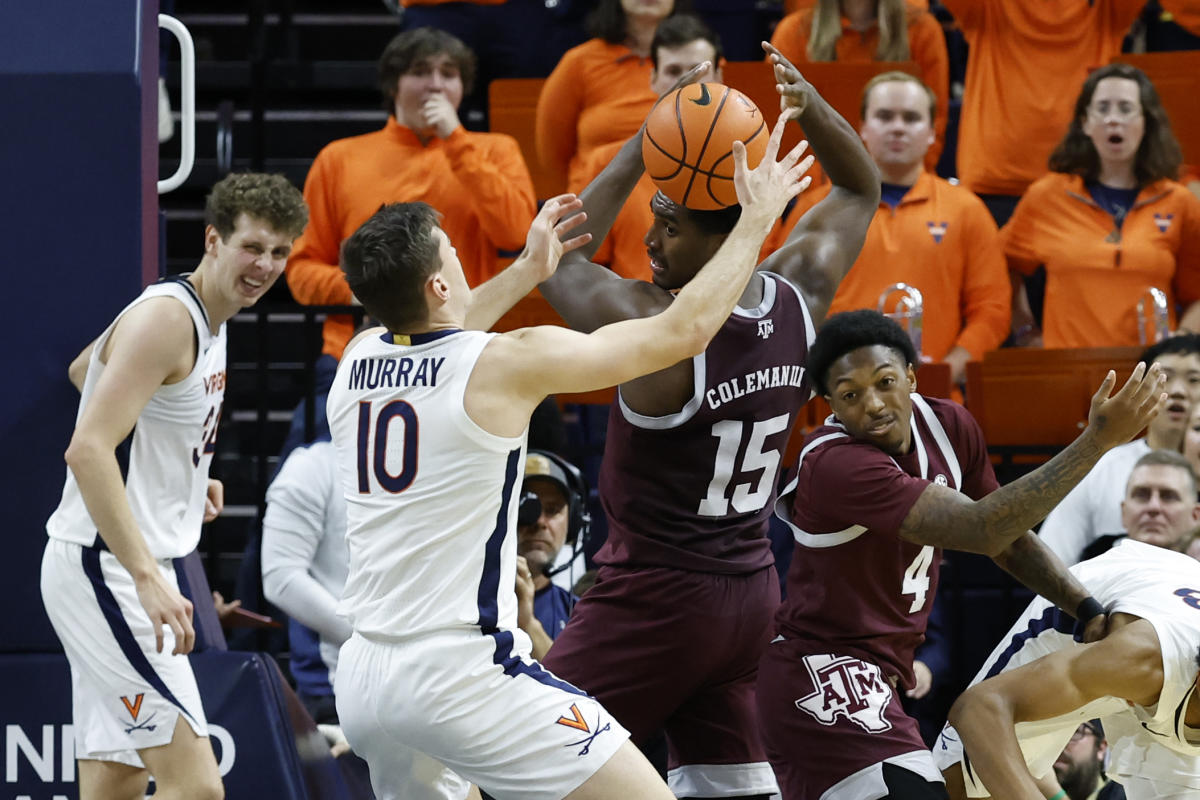As the worst team in the NHL last season, the Anaheim Ducks spent a significant amount of time retrieving pucks from their net. They allowed a staggering 225 goals at five-on-five, ranking second in the league just behind the Columbus Blue Jackets’ 231. Under former coach Dallas Eakins, the Ducks employed a man-to-man defensive system in their own zone. Unfortunately, it didn’t pan out well for them.
During most of the 2022-23 season, Kevin Shattenkirk, now a member of the Boston Bruins, felt like he and his teammates were consistently chasing the play, despite the simplicity of the man-to-man approach. “It’s probably the easiest way to play defense,” Shattenkirk stated. His teammate, Hampus Lindholm, a former Duck, chimed in, saying, “Simple if you’re smart.” Shattenkirk humorously agreed, adding, “And it’s simple if you can defend. I think that was part of our problem. If you can’t win your one-on-one battles, you can’t create turnovers. This allows opponents to maintain possession, which proves to be challenging to stop when they establish a cycle and move the puck around the zone. You almost have to wait for a shot or a rebound in the corners to apply pressure.”
Shattenkirk’s fortune may have changed with his move to the Bruins. He now plays in a zone defense system, and he’s not the only one bidding farewell to man-to-man coverage. The St. Louis Blues, Calgary Flames, and Edmonton Oilers are among the teams that have transitioned to different defensive strategies this season, hoping to replicate the success of championship teams like the Vegas Golden Knights and Tampa Bay Lightning. “Many teams are adopting this approach,” explained Bruins coach Jim Montgomery. “You see it more and more in the league.”
In the NHL, man-to-man defense appears to be on the decline. Although man-to-man defensive schemes may make sense in theory, they don’t align well with the style of play in the NHL today. The league continues to value speed, skill, and size. Attempting to neutralize such players with individual assignments can be an exercise in futility, especially with referees encouraged to penalize physicality. “It’s challenging to match up against players like (Sidney) Crosby or a physically dominant player like (Evgeni) Malkin in a man-to-man system,” said Chicago Blackhawks coach Luke Richardson. “They are agile and can change direction quickly. We now have (Connor) Bedard, who is very similar, or Taylor Hall, who is strong and fast. Man-to-man coverage is a dangerous game. It requires the right personnel and team.”
The advantage of man-to-man defense lies in its ability to close down threats quickly. Defenders must identify their assignments early and stick with them in the defensive zone. The coverage is tight, leaving no open spaces for opponents to exploit. The Florida Panthers used a man-to-man system to advance to the Stanley Cup Final last season. However, in practice, man-to-man defense often falls short in the NHL. It puts defenders on an island, lacking support from teammates. If one defender loses their battle, it can trigger a breakdown in the defensive structure. Teams start chasing the puck, allowing the offense to maintain possession for extended periods. Defenders tire, leading to catastrophic outcomes.
“It’s not very intelligent,” remarked Bruins forward Patrick Brown, who played under a man-to-man system with the Ottawa Senators last year. “It requires excessive skating. The difference lies in working hard versus working smart and finding a balance between the two. In a man-to-man defense, one player must try to cover a fast opponent who already has possession of the puck. It’s challenging to catch up to a speedy player in that situation, isn’t it?”
There may be specific situations where a temporary switch to man-to-man defense can be beneficial. Defensive-zone faceoffs, for instance, present a good opportunity to employ this strategy. If the defending team loses the faceoff and then immediately transitions into tight man-to-man coverage, the attacking team will have limited time to execute a set play. Some teams even utilize a hybrid system. In the 2019-20 season, the Tampa Bay Lightning employed man-to-man coverage when the puck was in the defensive end’s high areas. The wingers would rush out to cover the points, while the center and defensemen stayed low and played a box-out style of defense. When the puck moved down low, the Lightning would transition to zone defense. Tampa Bay defensemen had the freedom to read the play and aggressively pursue the puck if they anticipated its path. This approach proved successful, as the Lightning won the Stanley Cup that season and the following one. Similarly, the Vegas Golden Knights won the championship by relying on zone defense.
As is often the case, the system that leads a team to victory becomes the model that other teams strive to emulate. “We’re somewhat of a copycat league, like many other leagues,” explained Nashville Predators coach Andrew Brunette. “We pay attention to successful teams like Vegas and Boston to see how they play. It seems to work well for them.”
According to an anonymous assistant coach, approximately one-third of teams currently use man-to-man defense. However, that number has been diminishing recently, with teams trending towards zone defense, as evidenced by the Lightning’s transition. Andrew Brewer, a former assistant coach with the Detroit Red Wings and Toronto Maple Leafs and a video coach with the Florida Panthers, now heads 200 Foot Hockey and 200 Foot Coaching, an organization focused on coach development. On social media, Brewer produces videos and graphics displaying different defensive and offensive structures used in NHL games. He also singled out the Lightning as a trendsetter in defensive schemes, noting an increase in teams attempting to replicate their hybrid zone defense.
“We’ve seen an increase in offensive numbers in the last few years, and I believe some of that can be attributed to teams adopting a man-to-man approach,” Brewer commented. “Teams are countering this by implementing zone coverages and adding layers of defense.”
Zone defense, when executed correctly, involves wings holding their position on the imaginary vertical lanes known as “dot lines,” which run between the faceoff circles. Defensemen are responsible for guarding the low ice between the dots, while the center supports the defensemen, fills passing lanes, and covers attackers near the high areas. “As centers, we have to be everywhere, like the spider in the web,” said Backlund, the Flames’ center. “We have to be ready to support in any situation, shut down plays at the right time, and be prepared to transition out of the defensive zone. Our role is crucial as we have to provide support for everyone.”
While defensemen are accountable for their specific zones, centers must be mobile and engaged in fending off opposing puck-carriers. Flames defenseman Chris Tanev compared zone defense to basketball, where teams often utilize zone coverages. He likened Backlund’s movements to a basketball defense technique called the “box-and-one,” where four defenders remain stationary while the best defender shadow the ballhandler. Backlund’s defensive positioning mirrors the structure of a box-and-one defense. Calgary defenseman Nikita Zadorov described their zone coverage in terms of a Newton’s cradle, envisioning “steel balls” moving when one defenseman releases their assignment and another steps in. The objective is to protect the middle of the ice.
The primary goal of zone defense is to safeguard the high-danger areas of the ice. When executed properly, the system ensures coverage between the circles and in front of the net. The wings collapse to support the defense, while the center is available for assistance. The defensemen rotate back to protect the front of the net. This territorial occupation is crucial in reducing scoring opportunities for opponents. Teams can take as many outside shots as they want, but they are low-percentage chances.
“We focus on protecting specific areas,” Montgomery explained the Bruins’ zone system. “We prioritize where shots come from and what we allow. If you look at analytics, it rewards teams that adopt a zone defense.”
In recent years, more teams have taken notice of the success achieved through zone defense. The shift towards offensive-oriented play has prompted teams to adapt their defensive strategies to counteract man-to-man coverage. By incorporating zone coverages, teams strive to limit scoring chances and ultimately find success, much like the Lightning and Bruins have done.

Sarah Anderson dives into the fast-paced world of NHL hockey. Her coverage includes game analysis, player spotlights, and the latest news from the ice. Sarah’s dedication to the sport ensures that hockey enthusiasts stay informed about the NHL’s thrilling action.




:no_upscale()/cdn.vox-cdn.com/uploads/chorus_image/image/72931262/usa_today_21973134.0.jpg)


